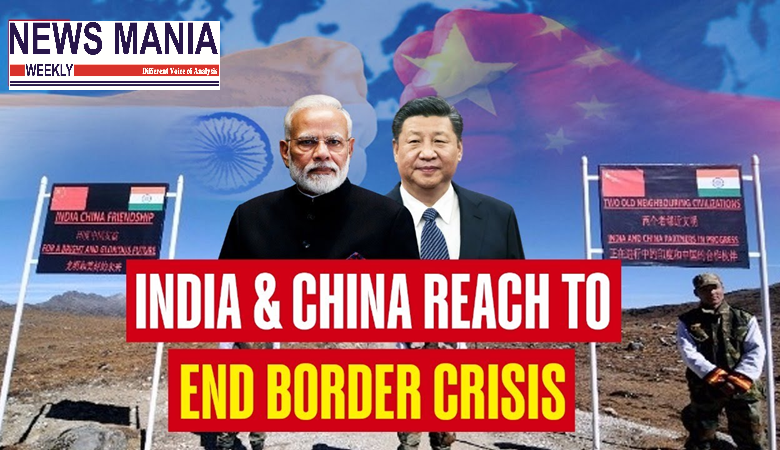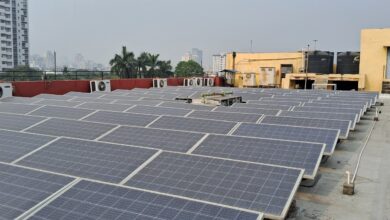How China was persuaded to sign the LAC patrolling pact by India

News Mania Desk / Piyal Chatterjee / 25th October 2024
In reality, the May 2020 détente between Narendra Modi and Xi Jinping over resolving the military tension in East Ladakh following the PLA transgression was a test of the NDA government’s resilience, the Indian Army’s tenacity and dedication under the most trying circumstances, and the full cooperation between Indian diplomacy and the military.
Although both leaders behaved appropriately during the Modi-Xi meeting in Kazan, the delegation-level discussions cleared the path for a Special Representative Dialogue to negotiate the de-escalation of the military buildup along the 3488-kilometer Line of Actual Control, and the foreign ministers of both nations will set a course for normalizing relations. Wang Yi, the Foreign Minister and Director of the Chinese Communist Party Central Committee Commission, will represent Beijing in the SR discussion and seek to ease military tensions on both sides of the LAC, while National Security Advisor Ajit Doval will speak for India. In addition, Wang will be the mediator in the normalization discussion with External Affairs Minister S Jaishankar.
Under the direction of the powerful inter-ministerial China Study Group (CSG), senior military commanders from the Corps to Division level and the interlocutors in the Working Mechanism for Consultation and Coordination on India-China Border Affairs (WMCC) engaged in arduous diplomatic negotiations that resulted in the resumption of patrolling by both armies in the Depsang Bulge and Demchok areas of East Ladakh. Following the brutal battle at Galwan on June 15, 2020, the WMCC convened 17 times, while the military commanders convened 21 times to discuss disengagement and patrolling resumed.
India has been adamant about the restoration of patrolling rights in Depsang Bulge and Demchok, despite the announcement on September 9, 2022, of the disengagement from the Gogra-Hot Springs-Khugrang Nullah region. It has also made it clear that the road to normalization is contingent upon the fulfillment of these crucial military requirements. The buffer zones in the main areas of contention, Galwan, Gogra-Hot Springs-Khugrang Nullah, and Pangong Tso, are reportedly temporary, despite the opposition congress’s concerns about the agreement and the buffer zones. The Indian Army is determined to patrol these areas in the near future. The patrolling agreement did not address the buffer zones since doing so would have reopened the entire matter and might have led to new issues.
Since the Indian Army and PLA had blocked one another in Depsang and Demchok along the 1597-kilometer border in East Ladakh, the patrolling agreement that was made was limited to the Western Sector. The agreement to resume patrols gives India diplomatic flexibility and guarantees that entrenched powers won’t exploit China as a weakness of India. Additionally, it gives Prime Minister Narendra Modi greater legitimacy as a leader who has steadfastly stood his ground in the face of the PLA’s expansion in the Western, Middle, and Eastern sections of the LAC. Although the Indian Army has yet to resume patrols in Depsang and Demchok, the agreement has also resulted in a relaxation of the situation on the East Ladakh LAC.
Even if PM Modi and President Xi had a friendly and civil discussion in Kazan, India will take decisive and confirmed actions to normalize relations with China in order to prevent a border flare-up during the interregnum. However, because the patrolling agreement has the approval of President Xi, who is not only China’s top leader but also the chairman of the Central Military Commission, the PLA will also be limited in its ability to operate unilaterally on the LAC. In order to move the bilateral relationship ahead, PM Modi has emphasized mutual trust, respect, and sensitivity since the world cannot afford the price of India and China engaged in military conflict.
Indian military patrols will keep in mind the lessons learned from the transgressions in May 2020 and the precarious nature of peace on the LAC as they patrol points 10 to 13 A in Depsang and at Charding Ningling Nullah junction in Demchok in the days ahead. Since any unilateral action would freeze relations, China and India will have to manage the LAC. The tenacity of the political leadership and the unwavering dedication of Indian Army soldiers on the ground will also be remembered by the PLA and the general public. During valiant Indian Army operations south of Pangong Tso on August 29–31, 2020, an Indian tank fired a warning salvo towards approaching PLA tanks on Rechin La-Rezang, putting both armies on the verge of conflict.






